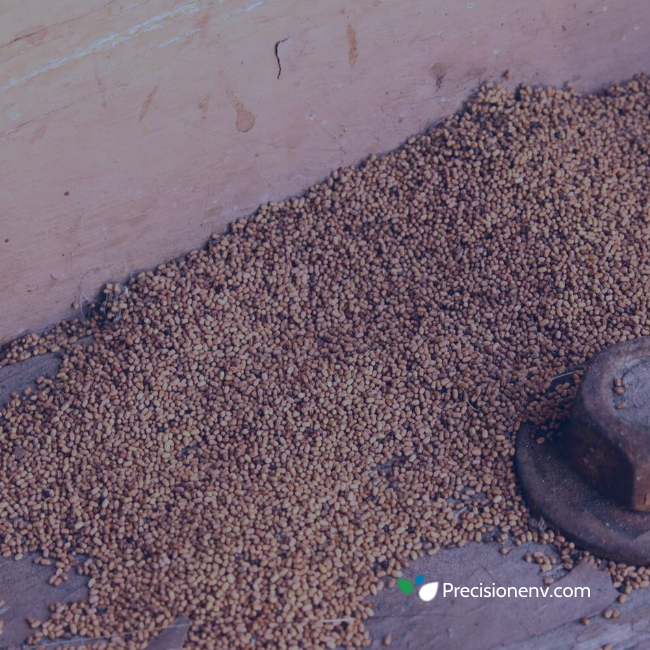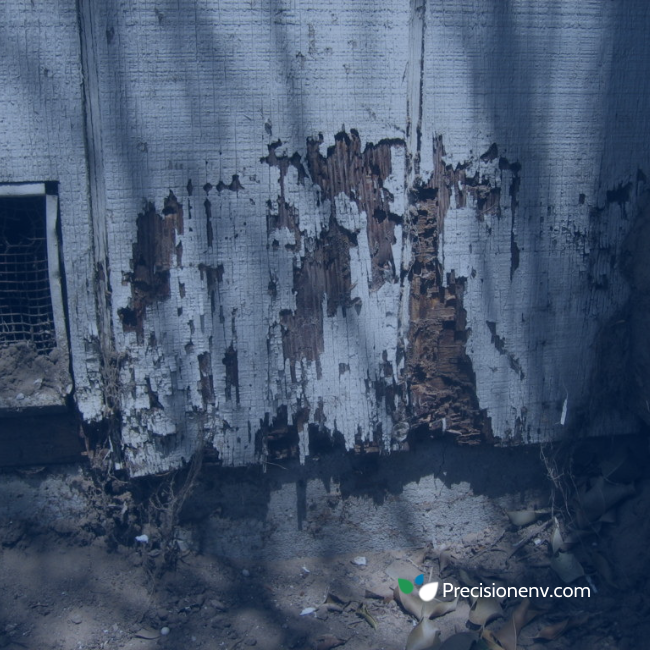There are many benefits to choosing a Heat Treatment (Structural Pasteurization) over traditional pesticide applications. Heat treatment is 100% chemical free, proven to kill termites. Heat treatments kill all living stages of termites and require one treatment. We provide solutions that will eliminate the use of chemicals in your home or business. So, whether you’re chemically sensitive, immune-compromised, have asthma, or are just concerned about the use of chemicals. Eliminate the cost and inconvenience of having to move out for three days. Heat treatments can be applied in a residential or commercial setting and requires virtually no prep on your part. It is ideal for restaurants, apartments, houses and more. Call Precision Environmental today for more information about our termite heat treatments.
Various insects have different thermal kill points. This is the minimum temperature that can kill an insect upon exposure within a specific amount of time. Precision Environmental Heat Technicians will introduce clean, dry heat into the structure, gradually increasing the temperature until the wood core reaches 130 degrees. Technicians then maintain the temperature at or above that level for 1.5 hours to ensure a complete kill. The entire procedure may be completed in as little as 8 hours.
- Cockroach – 130F thermal kill point
- Termites - 130F thermal Kill Point
- Bed bugs – 130F thermal kill point
- Ants – 130F thermal kill point
Benefits of Termite Heat Treatment:
- Absolutely no chemicals.
- Faster treatment time – The heat process requires approx. Eight hours to complete, compared to three days for chemical fumigation.
- It eliminates the cost and inconvenience of homeowners having to move out for three days. (Lodging, food, boarding of pets)
- Our supervisors and technicians are on-site for the duration of the treatment, so there is no need to worry or hire security. At the same time, your home sits unoccupied for days during chemical fumigation.
- No risk of roof, satellite, or antenna damage. We enclose the exterior from the eaves down. Chemical fumigation requires walking and dragging heavy tarps across the roof, which may damage the roofing material and other items on the roof. Fumigation requires you to sign a release of liability for the roof, satellite dish, antenna, and plant damage.
- Heat kills insect eggs and wood-boring beetles. Chemical fumigation does not destroy the eggs or eradicate wood-boring beetle infestations.
- Heat can also be used to kill mold, bacteria, viruses, dust mites, and other indoor allergens.
- Heat treatment reduces or eliminates odors and leaves the building smelling fresh.
- Heat dries out wet wood members, which helps to prevent mold, fungi/dry-rot, and termite re-infestation.
According to the California Department of Consumer Affairs, Fumigation and heat Treatment are the only two effective methods for total (whole-house) eradication. The ability for heat to penetrate inside of wood to kill dry wood termites makes the Heat Treatment process an effective non-chemical tool for whole structure eradication of these pests.
How Does Heat Treatment (Structural Pasteurization) Compare to Traditional Pest Control?
Time
- The preparation work required for Heat Treatment pest control is often significantly less than that required for traditional pest extermination.
- Since heat is able to move around large furniture items, you won’t be required to move them away from walls and corners like you would for pesticide application. When professionals are applying pesticides throughout your infested space, they will need easy access to areas furniture may be blocking.
Safety and Eco-Friendliness
- Heat treatment is a chemical-free method of pest control.
- For people concerned about the materials introduced to their homes or people with health concerns regarding pesticides, Heat Treatment is a preferable alternative.
- The only indication of heat treatment is dead bugs, there is no lasting residue.
Pesticides' Impact on Indoor Air Quality Are you aware of the health dangers of fumigation?
Signs Of Termite Activity
Common signs of an infestation include:





